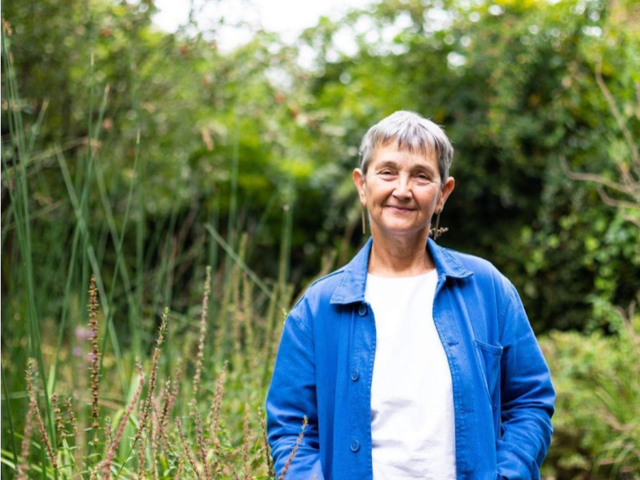“What is worth more, art or life?” This was the question asked by the activist Phoebe Plummer moments after throwing a can of tomato soup at Vincent van Gogh’s Sunflowers at the National Gallery in London. The provocative act by the Just Stop Oil protester in 2022 sparked outrage around the world, underlining her point about the relative levels of concern for a painting compared with the perilous state of the planet’s changing climate.
Although the National Gallery was not the target of this particular protest, the art world is increasingly becoming aware of its environmental impact—and doing something about it. Over the past three years the carbon footprint of the art market has been a top ten concern for both collectors and dealers, according to Art Basel’s annual Art Market Report.
The annual carbon emissions of the global art market has been estimated at 70 million tonnes of CO2 equivalent in 2021 by the environmental arts charity Julie’s Bicycle. That is more than the national emissions of several European countries, such as Austria or Greece.
One of the biggest sources of these emissions is art fairs. The Gallery Climate Coalition (GCC) estimates that a typical commercial gallery might expect a third of its annual carbon emissions to be associated with art fair activities. The most polluting of these activities is usually transporting works of art by air, which can account for up to 70% of that figure, as well as air travel by staff, energy consumption in venues and single-use materials waste.
It is therefore significant that last month some of the world’s leading art fairs, including Frieze and Art Basel, committed to a new environmental responsibility directive that includes setting targets to monitor and reduce emissions. It comes at the same time that GCC has launched a new Art Fair Toolkit to advise fairs how they can run more sustainably.
“We developed this new resource because the art fair industry urgently needs to address its environmental impact,” says the managing director of GCC, Heath Lowndes. “Art fairs have a significant influence on the art market and wider supply chains, yet they often face challenges in implementing climate-conscious practices. Through our collaboration with leading art fairs, it became clear that many organisations want to reduce their carbon and waste footprints but lack the necessary guidance.” Lowndes adds that shifting to greener shipping methods is urgently needed, with air freight producing on average 11 times more CO2 than road transport, and 68 times more than sea freight.
Frieze cuts fossil fuels
As part of its commitment to cut its carbon emissions in half by 2030, Frieze says it has in effect eliminated its reliance on fossil fuels by using a combination of biofuel and battery storage, as well as using only LED lights at its fairs and gallery spaces. “As public awareness around environmental issues grow, both galleries and collectors are seeking out organisations that are proactive in reducing their impact on the planet,” says Jon Ashman, the chief financial and operations officer at Frieze.
The smell of new carpets is one of the things that tells you that you have entered Frieze, but Ashman says the fair has introduced new systems for recycling in order to cut down waste. “All carpets used at the fairs are collected by our flooring vendor post-event, where they are chipped, shredded, and repurposed as raw materials for other industries. The gallery walls, lighting, signage and tent structure are all reused year after year or recycled. The focus is always on finding ways to repurpose and recycle wherever possible, in line with our commitment to near-zero waste by 2030.”
Coinciding with the launch of the new toolkit is an updated version of the GCC carbon calculator to help arts organisations track their carbon use. It includes the ability to report on individual projects or events and provides annual data to better track carbon emission reduction. “It also has a bulk data upload function, streamlining the process and making carbon reporting more insightful and simpler,” Lowndes says.
The new alliance of art fairs has also committed to encouraging more sustainable forms of transport for staff and visitors. The GCC and Frieze urge people travelling from Europe to get the train as part of their #traintofrieze initiative. They calculate that flying to London from Paris uses 76kg of carbon, from Berlin 194kg and from Milan 222kg, whereas taking the train from each of these locations uses 14kg, 37kg and 43kg respectively. The 20 largest fairs attract upwards of a million visitors annually. Lowndes says: “While exhibitor and visitor travel isn’t directly controlled by fairs, as hosts they share responsibility for its carbon footprint.”
Adding more of a local focus to art fairs would improve their sustainability according to Alice Audouin, the founder of Art of Change 21, a nonprofit founded in 2014 to encourage a more environmentally sustainable cultural sector. She says: “The problem is that art fairs don’t get a regional audience but an international one. This is because they are not focused enough on their own country.” Audouin says that fairs should follow the lead of Art Paris, which has at least half the works on display from French galleries. “Its environmental impact is reduced and the business is good. This should be the norm, not least because the big art fairs look the same—same galleries, same artists. If they had their own identity and purpose, it would be better,” she says.
Virtual reality offers a solution
One way to reduce the environmental impact of freight transportation, visitor travel, venue heating and material waste could be by using new technology that does away with the need for any of it. As a visual medium, virtual reality technology is a natural fit with the world of visual arts and could reduce the need for as many traditional art fairs.
Vortic is one company offering virtual reality and other digital exhibitions allowing collectors and visitors to experience works without the need for any travel or shipping. Vortic’s founder, Oliver Miro, says a fully digital exhibition can cut emissions by 96%, while a hybrid setting with parts of the show in digital form can reduce emissions by half.
“We are trying to cut down the number of journeys an artwork needs to take before it ends up in a collector’s house”, Miro says. “Typically, the work will go from an artist studio to the gallery, to an art fair, and eventually to the collector. Cutting down the number of journeys an artwork needs to take is such an obvious way to move towards a more sustainable art world.” He is clear that virtual exhibitions are not going to spell the end of art fairs or cut their emissions entirely: “If there is an important opening at a museum, would we want to stop travelling altogether? No. But if you can reduce this by 10%, 20%, 30%, then cumulatively this will make a big difference.”
Miro says that, as well as improving the environmental sustainability of an exhibition, these new digital exhibitions can also enhance the viewing experience by creating virtual viewing spaces unconstrained by the physical world and providing the viewer with extra information and context about works. “I believe people want to change for the better but making these changes is difficult. People in any industry get used to doing things in a certain way,” Miro says. “Changing that is a step into the unknown and will be difficult but we need to make that progress.” Both Frieze and Art Basel say they are exploring how to make use of this kind of technology.

The artist Albano Hernández aims to draw attention to the climate crisis with his optical illusion work The Shadow (2024) at Frieze Sculpture, a life-size shadow painted on grass Photo: Linda Nylind; Courtesy of Linda Nylind / Frieze
Four things galleries can do to reduce their climate impact, according to Heath Lowndes, managing director of the Gallery Climate Coalition
1. Start a green team
Taking individual action on climate issues can be hard, but a “green team” offers an empowering way to make a difference. Having a dedicated internal group working towards targets will make the process more efficient. A green team is a group of employees engaged in advancing sustainability within an organisation. In the case of smaller organisations, a single green ambassador can take on the role. This will increase employee engagement with environmental challenges and create a strong culture of sustainability in the workplace. Successes might not always happen straight away, but by carving out a specialist team, organisations will be building a culture of climate impact awareness.
2. Complete a carbon report
Annual carbon reporting is essential for understanding and reducing an organisation’s environmental impact. An annual report takes a holistic view of operations over a year, meaning organisations can capture the entirety of their emissions, and nothing falls between the gaps. The Gallery Climate Coalition (GCC) offers a carbon calculator on its website (galleryclimatecoalition.org) to calculate emissions data for the past 12 months to establish a carbon footprint baseline, from which a reduction target for 2030 can be set. Collecting the necessary data for a carbon report might seem daunting at first, but much of it should already be available through finance records.
3. Publish an environmental responsibility statement
This is a way for a gallery to take public responsibility for its environmental impact. The statement should acknowledge the seriousness of the environmental crisis, clearly state a position on the issue and summarise the actions the organisation is taking to address it. This will show staff, audiences and other stakeholders that the gallery takes the issue seriously, help motivate it internally and encourage supporters to hold it accountable. The statement is not a claim that it is doing things perfectly or has all the answers, but that it is trying to do its best to assess, report and reduce impact, setting targets in line with science, taking any actions it can, and working towards solutions.
4. Become a GCC member
The GCC membership currently stands at more than 1,500, from more than 50 countries, and includes artists, nonprofits, institutions, art-sector businesses, commercial galleries and individual professionals. It is free to join and members agree to supporting GCC’s sector-wide targets and coalition commitments (listed on the website). GCC’s core goal is to facilitate a minimum of 50% of CO2 emissions reduction across the sector by 2030, as well as shifting members towards near-zero waste operations by 2030.






